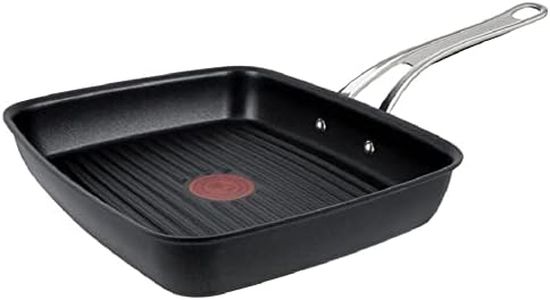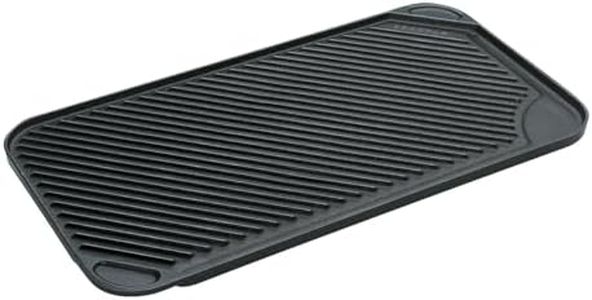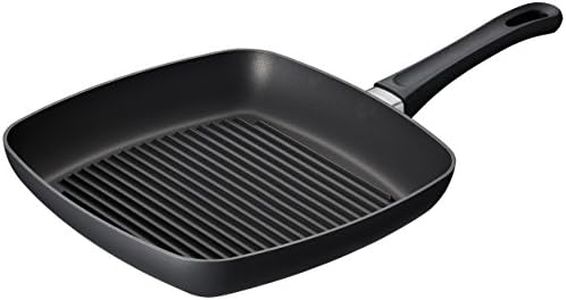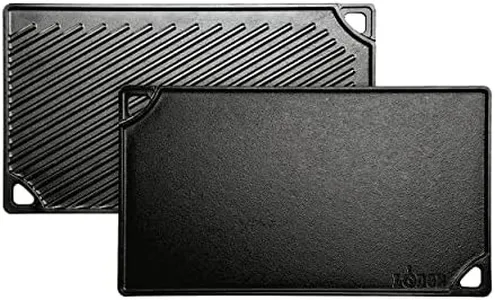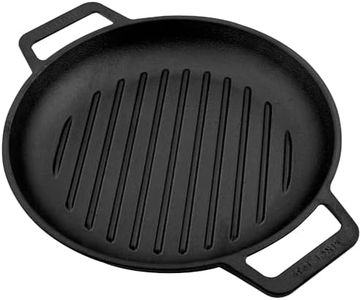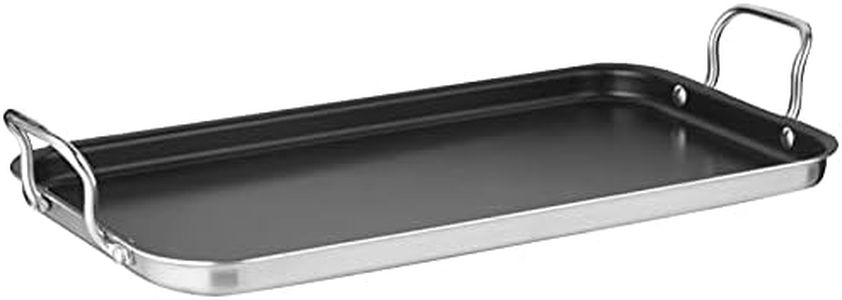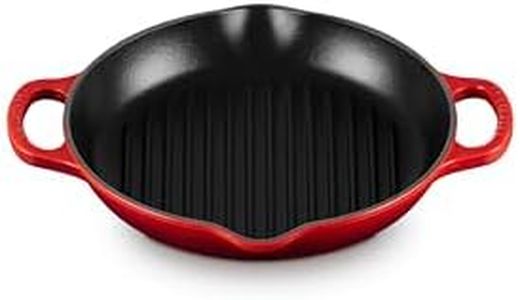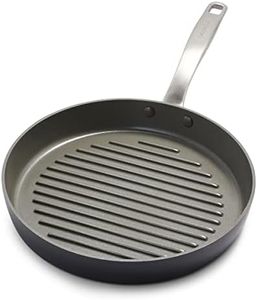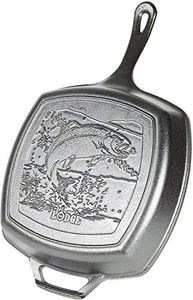We Use CookiesWe use cookies to enhance the security, performance,
functionality and for analytical and promotional activities. By continuing to browse this site you
are agreeing to our privacy policy
10 Best Grill Pans
From leading brands and best sellers available on the web.Buying Guide for the Best Grill Pans
Choosing the right grill pan can make a big difference in how your food cooks and tastes. A quality grill pan can mimic the char and sear of outdoor grilling right on your stove, making it perfect for steaks, vegetables, and more. When picking a grill pan, it's important to consider several features to match how and what you like to cook.MaterialMaterial refers to what the grill pan is made from, such as cast iron, stainless steel, or aluminum. This matters because different materials hold and distribute heat differently. Cast iron is known for excellent heat retention and giving foods great grill marks, but it’s heavy and needs seasoning. Stainless steel heats up quickly but doesn’t retain heat as long, making it good for fast cooking but not for thicker foods. Aluminum is lightweight and heats evenly, often with a nonstick coating, but may not last as long. Think about whether you want rich searing (go for cast iron), quick heating (stainless), or easy handling and maintenance (aluminum or nonstick) based on your needs.
Size and ShapeSize and shape determine how much food you can cook and how well it fits on your stove. Grill pans are usually square or rectangular to provide more surface area, but they can also be round. Smaller pans (around 8 inches) are good for singles or couples, while larger pans (10-12 inches or more) are better for families or cooking multiple items at once. Assess how many people you usually cook for and how much stove space you have, then match the pan accordingly.
Handle DesignHandle design affects how easy and safe the pan is to move, especially when hot. Some pans have one long handle, while others add a small helper handle on the opposite side for better stability. If you have limited strength, a pan with both handles can be easier to lift. Also, think about handle material—a metal handle can go in the oven, but may get hot on the stovetop, while a silicone handle stays cool but might not be oven-safe.
Surface or CoatingThe cooking surface of a grill pan can be bare metal, enamel-coated, or nonstick. Bare cast iron develops seasoning over time and offers a natural nonstick effect, but needs regular care. Enamel-coated surfaces don’t require seasoning and are easier to clean, but can chip. Nonstick grill pans are very easy to use and clean, but the coating can wear out and is less suited for very high heat. Pick the surface that matches how much maintenance you want and what types of food you usually grill.
Ridge Height and SpacingRidge height and spacing refers to the raised lines inside the grill pan that create grill marks and allow fat to drain away from the food. Higher and wider-spaced ridges will give you more pronounced grill marks and keep food away from its drippings, which is great for steaks and burgers. Lower ridges are easier for delicate foods like fish and vegetables, but don’t offer strong grill marks. If you want a true grilled effect, go for higher, widely spaced ridges; for general use, medium or low ridges will suit a wider range.
Compatibility with Cooking SurfacesNot all grill pans work with every type of stove. Some pans, especially cast iron, are safe for induction cooktops, while others might not work unless they have magnetic bases. If you have a ceramic, gas, electric, or induction stove, check that the pan is compatible. Make your choice based on your home setup to ensure safe and effective cooking.

